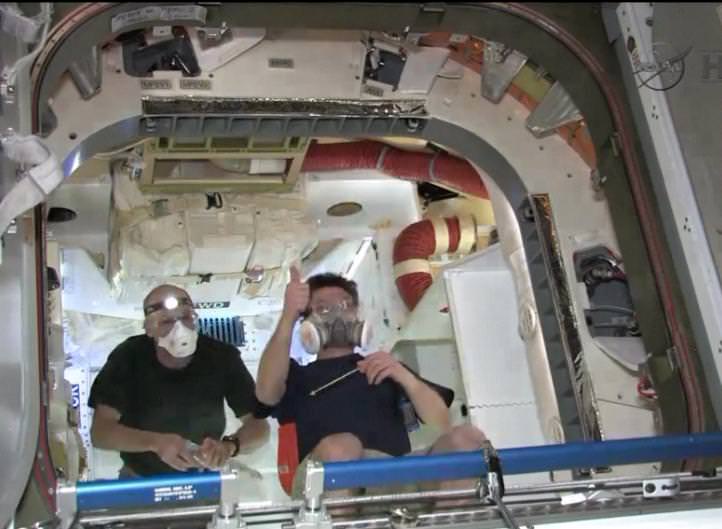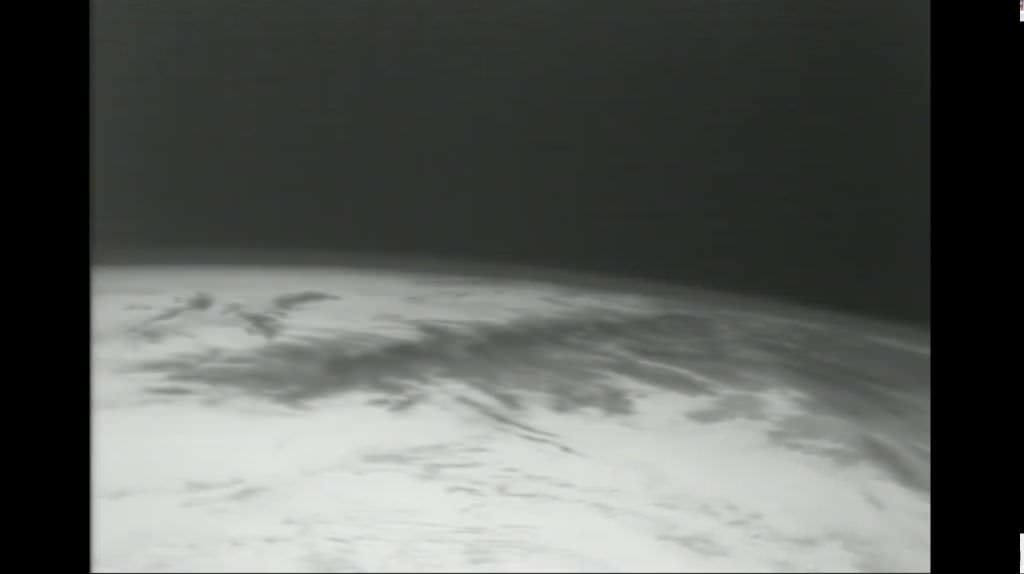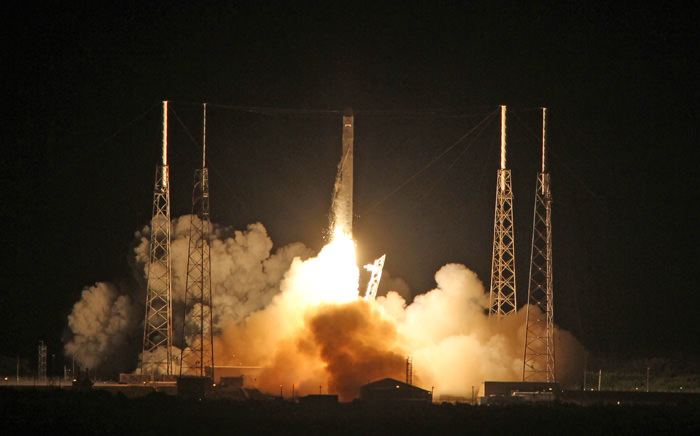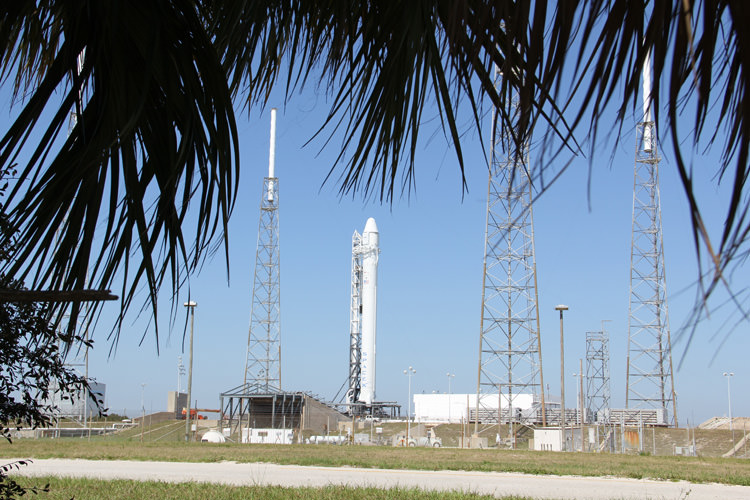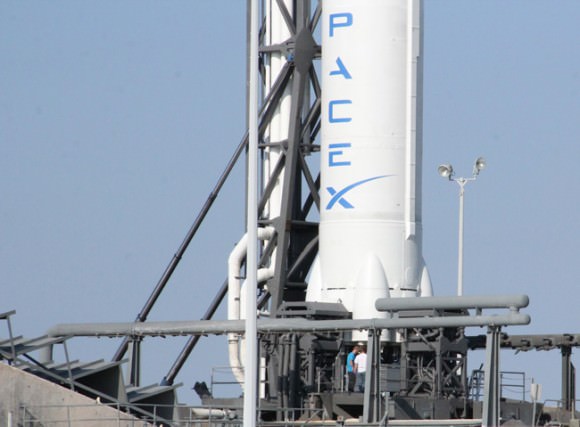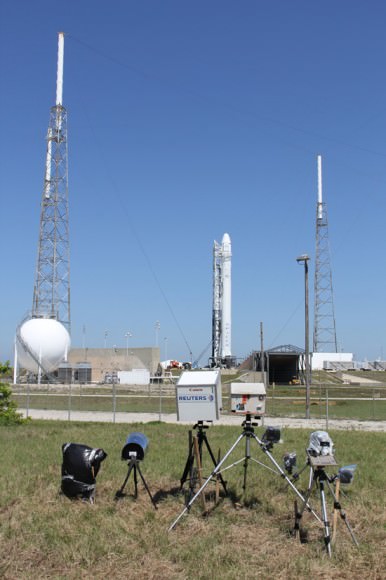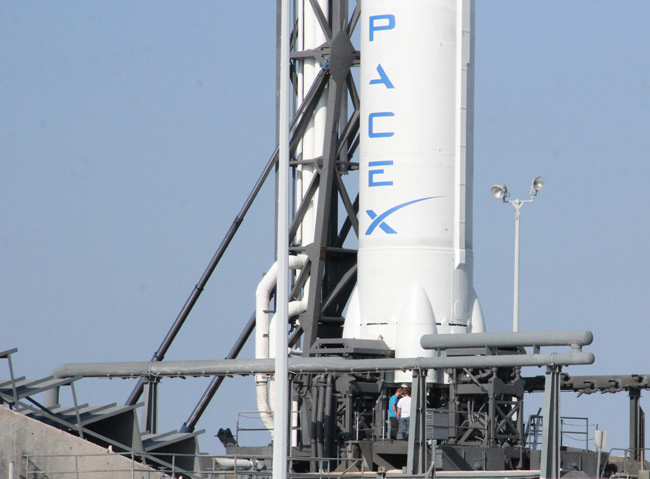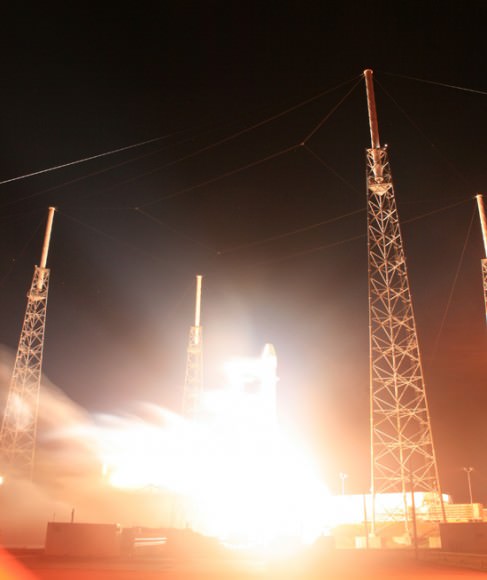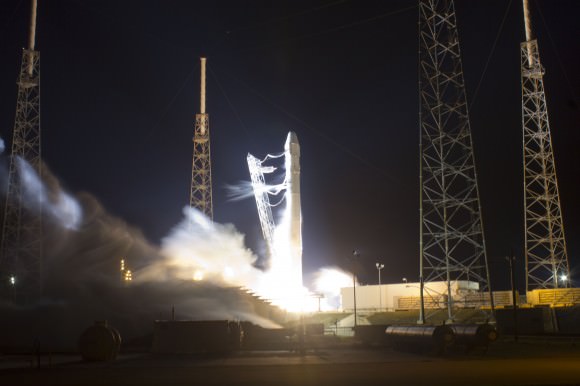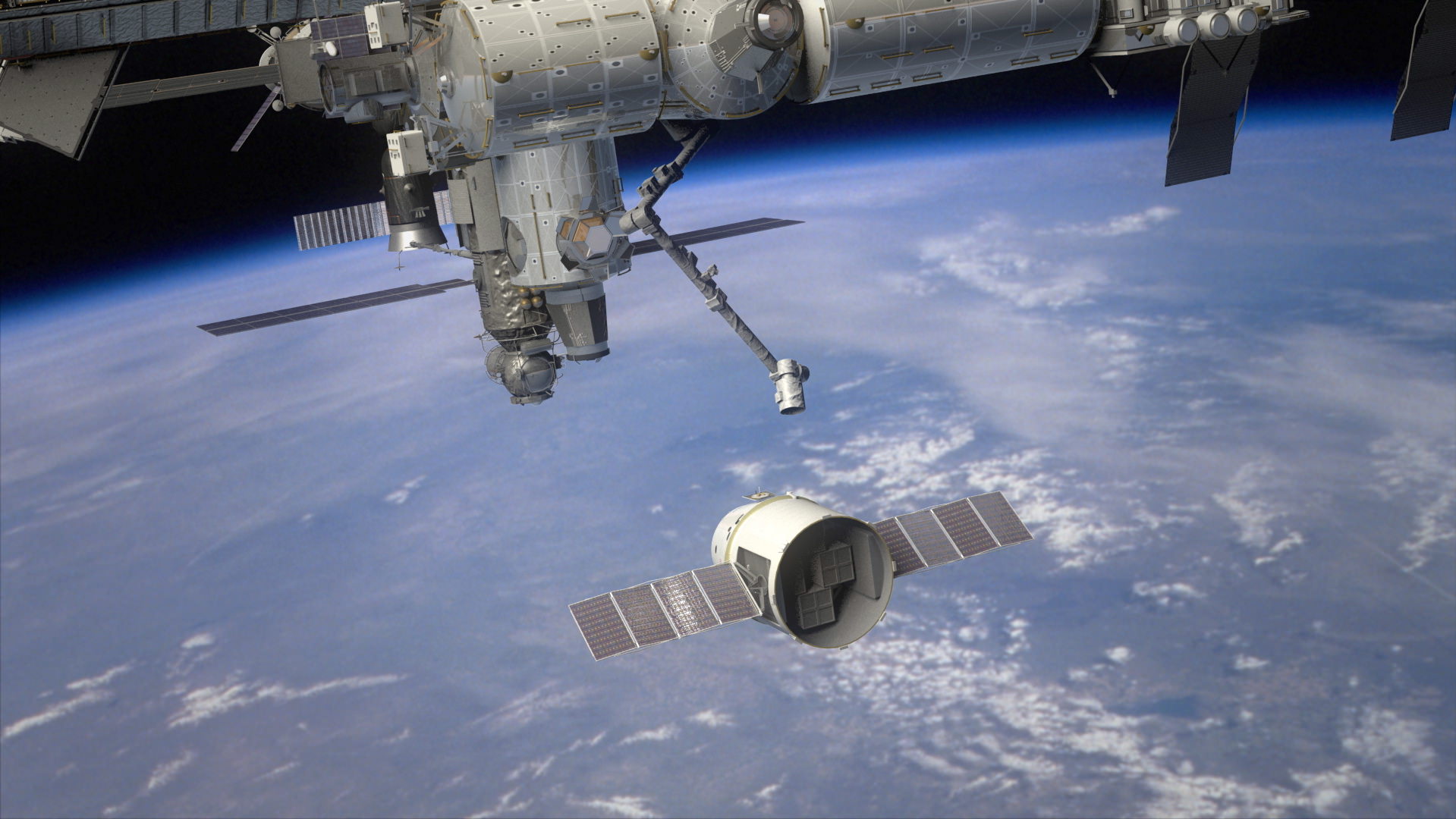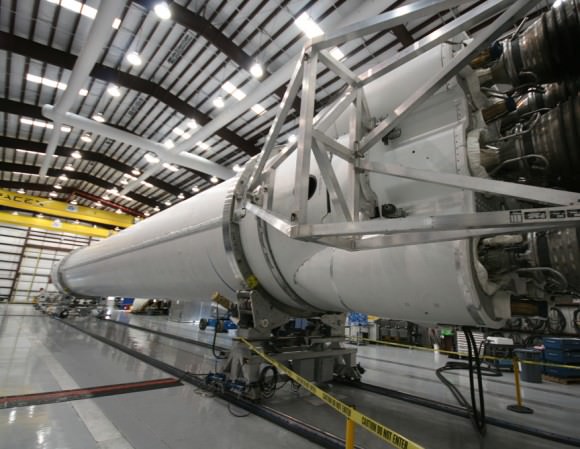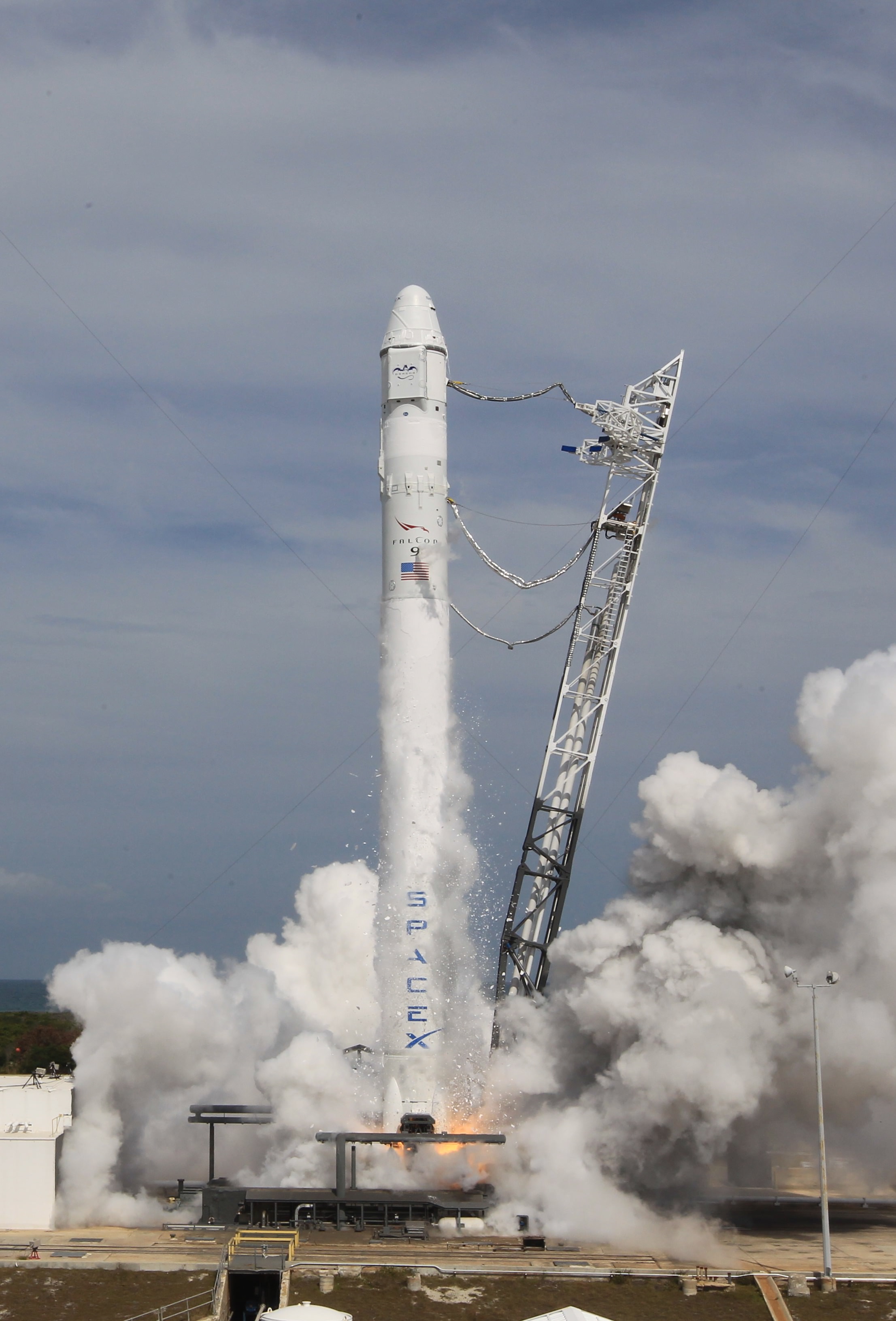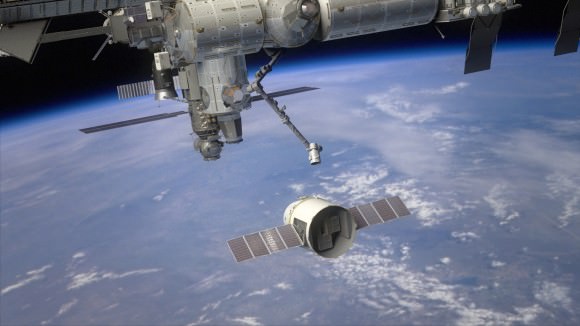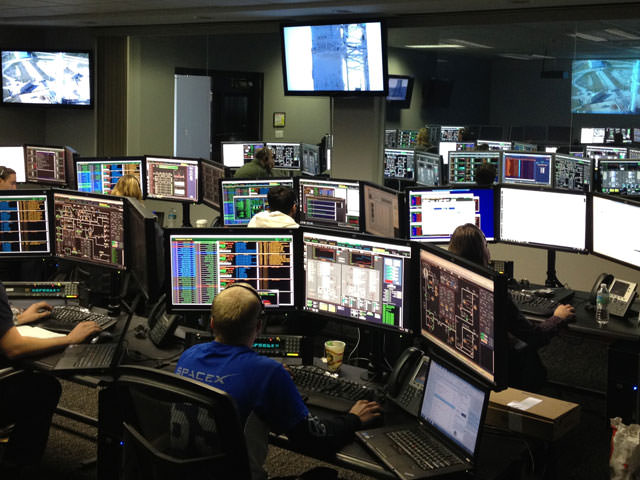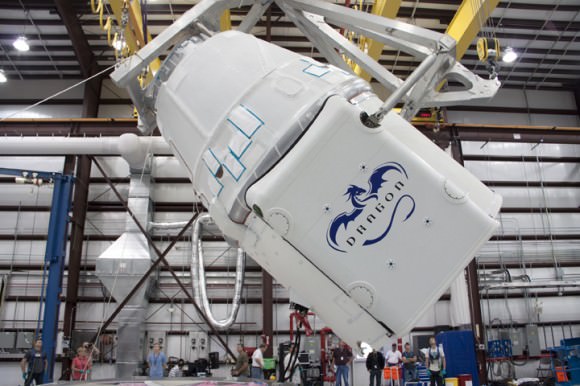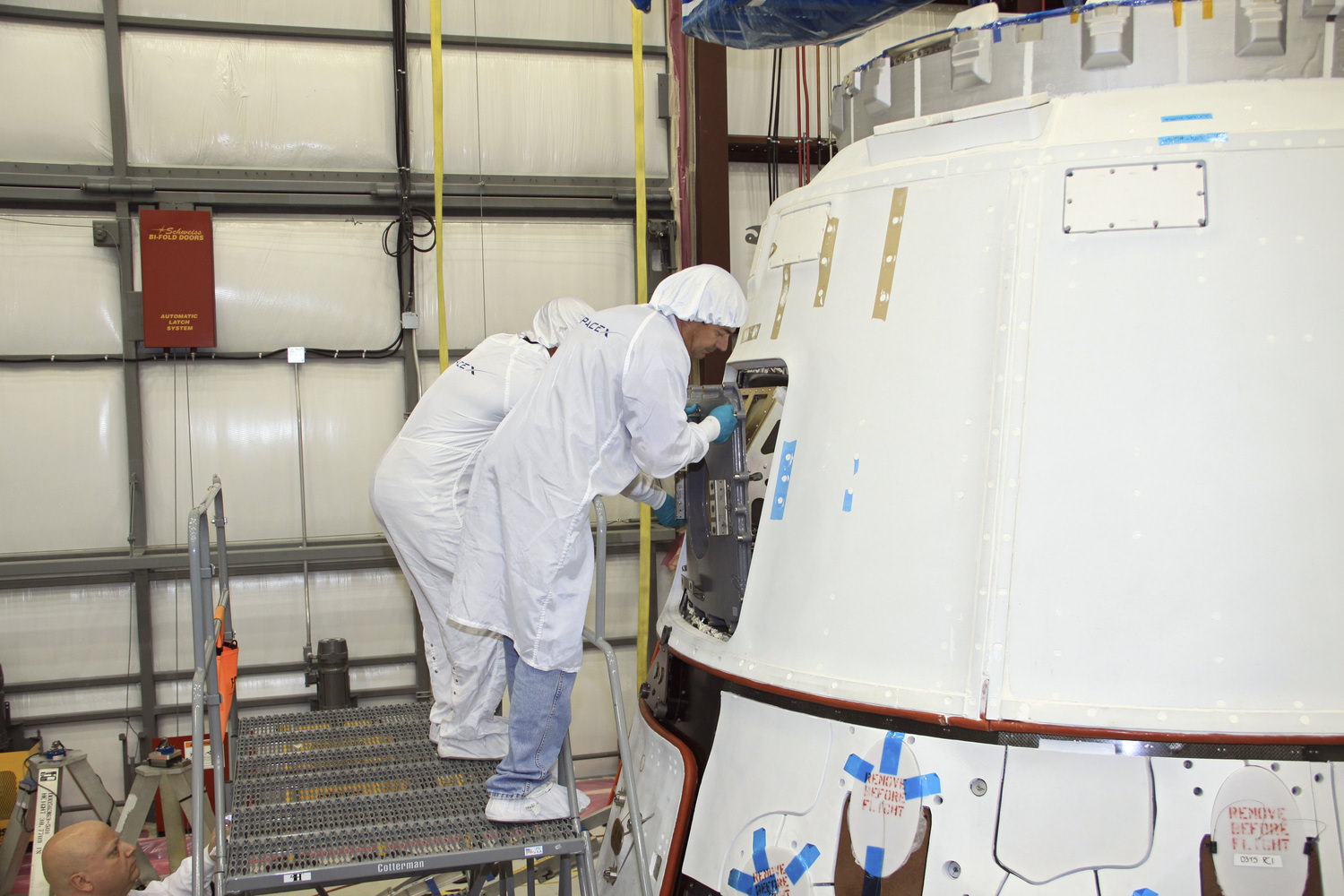[/caption]
For the first time in history space station astronauts have ‘Entered the Dragon’ .. The 1st Private Capsule in Space !
The hatches between the newly arrived Dragon private capsule and the International Space Station’s Harmony Node 2 module were opened at 5:53 a.m. EDT (0953 GMT) today, Saturday, May 26 as the massive complex was flying 407 kilometers (253 miles) over the Tasman Sea between Australia and New Zealand, just west of Auckland.
NASA astronaut Don Pettit had the honors of opening the hatch to the history making first commercial spacecraft to dock at the ISS and begin a busy few days of unloading gear and supplies.
Clearly the crew was eager for the momentous moment because Pettit and Russian cosmonaut Oleg Kononenko, Station Commander floated into Dragon nearly two hours ahead of schedule for the initial inspections.
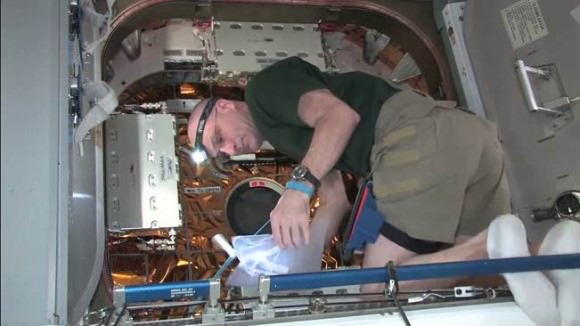
Dragon is the first private spacecraft ever to journey and connect to the International Space Station and marked a milestone event in space history when it arrived yesterday morning on May 25. Dragon is the world’s first commercial resupply vehicle and was built by SpaceX Corporation based in Hawthorne, Calif., founded by CEO and Chief Designer Elon Musk.
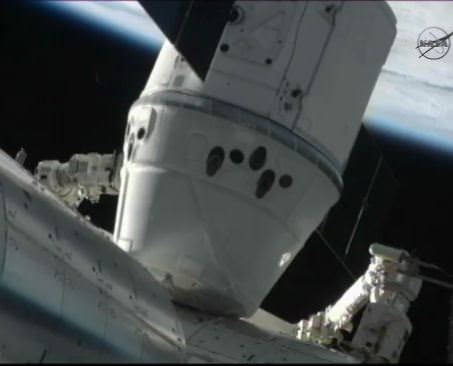
As a routine precaution to guard against possible contamination and floating debris, Pettit and Kononenko wore protective eye goggles and dust masks over their mouths as they floated and somersaulted playfully through the hatch and all looked in ship shape. They took off the protective gear about 20 minutes later after the air had been well mixed and receiving the all clear from Houston Mission Control.
“There was no sign of any kind of FOD (foreign object debris) floating around in the atmosphere inside,” Pettit reported to Houston upon entering the Dragon. “It kind of reminds me of the cargo capability that I could put in the back of my pickup truck, and the smell inside smells like a brand new car.”
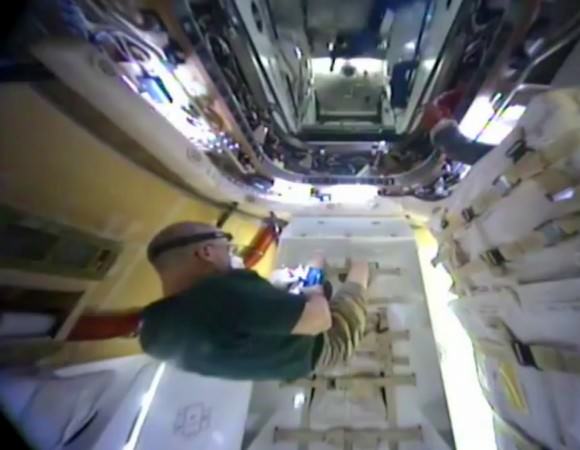
Barely 21 hours ago yesterday morning Pettit snared the Dragon as it was drifting free in space about 10 meters (30 ft) away using the stations 18 m (58 ft) long Canadian-built robotic arm. ESA Astronaut Andre Kuiper then parked Dragon at an open port on the Harmony node. The arm will remain grappled to Dragon throughout most of its docked time.
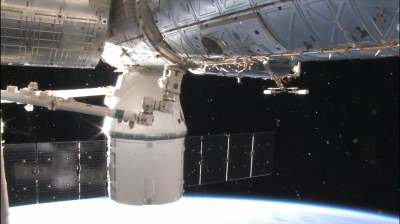
Dragon is a resupply ship meant to replace some of the cargo duties – both up mass and down mass – fully lost with the forced retirement of NASA’s Space Shuttle fleet last year. It is the first American built spacecraft of any kind to visit the ISS since the departure of the final Shuttle mission STS-135 in July 2011.
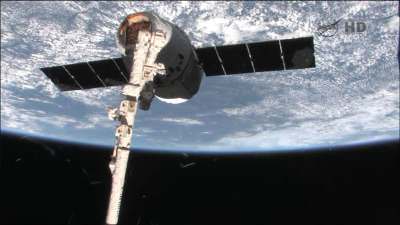
The Dragon was packed with 460 kilograms (1014 lbs) of non-critical cargo including 306 kg (674 lbs) of food and crew provisions; 21 kg (46 lbs)of science experiment; 123 kg (271 lbs) prepositioned cargo bags to be used for future flights; and 10 kg (22 lbs) of assorted computer supplies and a laptop.
The vehicle will be refilled with more than 1400 pounds of science samples, trash and unneeded gear for the trip back home. Dragon is the only ISS cargo resupply vessel that has any significant return to Earth capability since it is equipped with parachutes and a heat shield, unlike the ATV, HTV and Cygnus which burn up on re-entry into the Earth’s atmosphere.
“Dragon is really the main means of carrying cargo back from the space station,” said Elon Musk at a post docking media briefing.
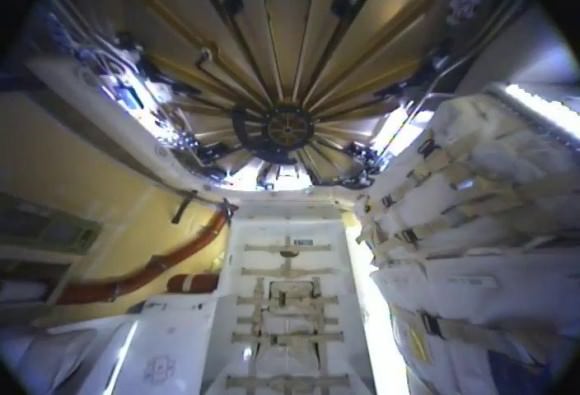
SpaceX is under contract with NASA to conduct a dozen Falcon 9/Dragon resupply missions to carry about 44,000 pounds of cargo to the ISS at a cost of some $1.6 Billion over the next few years.
The first operational Dragon resupply mission to the ISS could launch as soon as September.
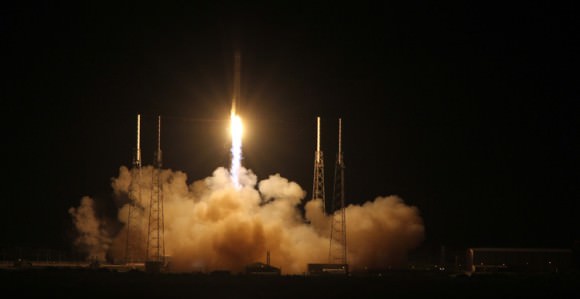
The Dragon was blasted to space atop a SpaceX Falcon 9 booster from Cape Canaveral, Florida on this historic test flight on May 22, 2012 and linked up with the ISS on Flight Day 4 on May 25.

